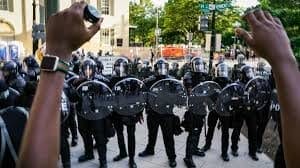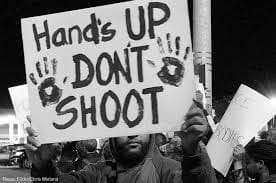by Jason Tarnow | Jun 29, 2022 | Crime, Media, Politics
In May of 2022, the Supreme Court of Canada determined that stacking parole ineligibility for multiple murders is unconstitutional under Canadian law.
In 2011, Stephen Harper’s government passed legislation relating to sentencing provisions in the Criminal Code that would allow Judges to impose parole ineligibility far beyond the minimum of 25 years on the offence of First Degree Murder, pursuant to Section 745.51.
Since that time, several sentences have been passed in imposing parole ineligibility, with the most lengthy sentence being no parole eligibility for 75 years in the case of Douglas Garland, who was found guilty of murdering two adults and their grandson. Garland appealed his sentence to the Alberta Court of Appeal, where it was upheld.
It was the case of the Quebec mosque shooter, Alexandre Bissonnette, that resulted in a unanimous decision from all nine Supreme Court Justices to rule that the sentencing provision violated Section 12 of the Canadian Charter of Rights and Freedoms, granting protection against cruel and unusual punishment. Bissonnette pleaded guilty to 6 counts of First Degree murder and six counts of attempted murder, and the Crown had asked for a parole ineligibility period of 150 years – 25 consecutive years for each of the six people he murdered – which would have been the harshest sentence handed down in Canada since the abolishment of capital punishment. The presiding Judge declined, and instead sentence Bissonnette to 40 years before he could apply for Parole. Criminal defence counsel appealed to the Quebec Court of Appeal in 2020, and the sentence was reduced to 25 years. The Crown then appealed to the Supreme Court of Canada, which led to the landmark decision to cap parole ineligibility at 25 years.

With this decision, those incarcerated under the stacked ineligibility provision are seeking to have their sentences reduced, which has caused a great deal of alarm to the public. It is important to remember that someone convicted of first degree murder will have eligibility at Parole after 25 years – but that does not guarantee their release by any means. The Parole Board looks at many factors when determining whether or not to grant Parole, including the actual offence itself, criminal and social history, rehabilitation efforts, and remorse. Their review of an individuals history when considering release is thorough and rigid. Victim impact statements from family members and loved ones are also taken into consideration.
The decision from the SCC included the following passage:
“This appeal is not about the value of each human life, but rather about the limits of the state’s power to punish offenders.”
This is a reminder that the Court’s decision to limit parole ineligibility is not meant to diminish loss of life, or to favour offenders. It reaffirms that our government, including judicial institutions, must abide by limits to ensure that Canada remains a fair and just society for all.
If you have been charged with a criminal offence in British Columbia (including, but not limited to: Richmond, Vancouver, Surrey, Delta, Langley, Coquitlam, New Westminster, Abbotsford, Victoria, Nanaimo, Kamloops, Kelowna) or the Yukon Territory (including but not limited to: Whitehorse, Dawson City, Watson Lake, Haines Junction, Mayo, Old Crow) contact experienced counsel at Tarnow Criminal Law without delay.
by Jason Tarnow | Feb 23, 2021 | Crime, Legal Rights, Police, Politics, Wheels Of Justice
On May 1, 2020, Prime Minister Justin Trudeau issued an Order in Council immediately banning the use, sale and transport of approximately 1,500 “assault” style firearms. This action was met with criticism from firearm owners, retailers and pro-gun advocates from across the country. A two-year amnesty period for restricted firearm owners will expire on April 30, 2022, which is around the time when Bill C-21 could come into effect.
At its first reading in the House of Commons on February 16, 2021, details about Bill C-21 emerged that created further frustration and confusion among Canadian firearm owners and retailers. Described as “an Act to amend certain Acts and to make consequential amendments (firearms)”, Bill C-21 will make substantive changes to both the Criminal Code and the Firearms Act, both of which are Federal legislation, thus impacting Canadians from coast to coast. It will also amend the Immigration and Refugee Act and the Nuclear Safety and Control Act.

Proposed amendments to the Criminal Code include:
- Increasing the maximum penalty of imprisonment for offences under Sections 95, 96, 99, 100 and 103 of the Criminal Code from 10 years to 14 years;
- Establishing a procedure that would allow any person to apply for an emergency prohibition order, or an emergency limitations on access order;
- Deem certain firearms to be prohibited devices for certain provisions;
- Create a new offence for altering a cartridge magazine to exceed its lawful capacity;
- Authorize employees of certain federal entities who are responsible for security to be considered as public officers for the purpose of section 117.07
One of the most concerning amendments, and the focus of today’s blog, involves establishing a procedure that would allow for any person to apply for an emergency prohibition order, or an emergency limitations on access order. The proposed amendment reads as follows:
Application for emergency prohibition order
110.1 (1) Any person may make an ex parte application to a provincial court judge for an order prohibiting another person from possessing any firearm, cross-bow, prohibited weapon, restricted weapon, prohibited device, ammunition, prohibited ammunition or explosive substance, or all such things, if the person believes on reasonable grounds that it is not desirable in the interests of the safety of the person against whom the order is sought or of any other person that the person against whom the order is sought should possess any such thing.
An ex parte application does not require notice to be given to the adverse party. This means that any person can make an application to a judge seeking the immediate prohibition (and subsequent seizure) of any of the items described in section 110.1(1). Success on the application is discussed next:
Emergency prohibition order
(2) If, at the conclusion of a hearing of an application made under subsection (1), the provincial court judge is satisfied that the circumstances referred to in that subsection exist and that an order should be made without delay to ensure the immediate protection of any person, the judge shall make an order prohibiting the person against whom the order is sought from possessing any firearm, cross-bow, prohibited weapon, restricted weapon, prohibited device, ammunition, prohibited ammunition or explosive substance, or all such things, for a period not exceeding 30 days, as is specified in the order, beginning on the day on which the order is made.
The seizure process will unfold one of two ways:
Warrant to search and seize
(4) If a provincial court judge is satisfied by information on oath that there are reasonable grounds to believe that a person who is subject to an order made under subsection (2) possesses, in a building, receptacle or place, any thing the possession of which is prohibited by the order, and that it is not desirable in the interests of the safety of the person, or of any other person, for the person to possess the thing, the judge may issue a warrant authorizing a peace officer to search the building, receptacle or place and seize any such thing, and every authorization, licence or registration certificate relating to any such thing, that is held by or in the possession of the person.
OR:
Search and seizure without warrant
(5) If, in respect of a person who is subject to an order made under subsection (2), a peace officer is satisfied that there are reasonable grounds to believe that it is not desirable, in the interests of the safety of the person, or of any other person, for the person to possess any thing the possession of which is prohibited by the order, the peace officer may, where the grounds for obtaining a warrant under subsection (4) exist but, by reason of a possible danger to the safety of the person or any other person, it would not be practicable to obtain a warrant, search for and seize any such thing, and any authorization, licence or registration certificate relating to any such thing, that is held by or in the possession of the person.
The seized items will remain in police custody for 30 days. When the Order expires, the seizing agency (police) must make an application for a Prohibition Order under Section 111(1) of the Criminal Code. This Application requires that the subject of the Order (the firearms/weapons owner) be given notice of the application, and the opportunity to respond in court. At this juncture, there are three ways the seized items can be returned to their owner:
- No application is made for a Prohibition Order under Section 111(1);
- If the hearing does not result in a Prohibition Order being made under Section 111(5);
- If the Order issued at the ex parte application is revoked
While this legislation seeks to establish an alternative procedure that gives the public power to seek protection from violence involving firearms and other weapons, it fails to address the possibility that this power could be abused. Currently, the law requires that an individual report their concerns to the police, who would then engage in an investigation to determine whether a seizure is necessary. When citizens assume this authority, there are a myriad of complications that could pose negative consequences not only to the potential subject of the Order, but to whomever makes the ex parte application. It requires that they take the law into their own hands – something that law enforcement regularly counsels against.
Bill C-21 is still in the early stages of the legislative process, but has garnered both support and criticism from those it will protect, and those it will harm.
by Jason Tarnow | Oct 2, 2020 | Crime, Legal Rights, Media, Police, Politics, Wheels Of Justice
Whenever incidents relating to terrorism in Canada hit the news, the eyes of Canadians widen with revolt. Recent headlines elicited a similar response, with a healthy dose of confusion and curiosity added to the mix.

On September 21, 2020, criminal charges were announced against 25 year old Ontario resident Shehroze Chaudhry – but not due to allegations of committing acts of terrorism. Rather, Chaudhry has been charged under Section 83.231(1) of the Criminal Code – perpetrating a hoax regarding terrorist activity:
83.231 (1) Every one commits an offence who, without lawful excuse and with intent to cause any person to fear death, bodily harm, substantial damage to property or serious interference with the lawful use or operation of property:
(a) conveys or causes or procures to be conveyed information that, in all the circumstances, is likely to cause a reasonable apprehension that terrorist activity is occurring or will occur, without believing the information to be true; or
(b) commits an act that, in all the circumstances, is likely to cause a reasonable apprehension that terrorist activity is occurring or will occur, without believing that such activity is occurring or will occur.

Chaudhry was a frequent guest on an award winning New York Times podcast known as “Caliphate”. He spoke, in gruesome detail, of his time as an ISIS executioner in Syria, among other things. But the charges levelled against him assert that his personal experiences as an ISIS soldier are fabricated.
While the NYT claimed to have verified his role in ISIS, he gave conflicting accounts to CBC, even going so far as to say he would take a polygraph to prove he had never killed anyone. He likely thought this would absolve him any criminal liability relating to terrorism offences in Canada, but the charges against him refute this misconception.
The details released from the police don’t specify if any other person was harmed or killed due to the alleged yarn by Chaudhry, but they will play a determinative role if he is convicted. The sentences range from a fine and imprisonment in a provincial correctional institution if prosecuted summarily, to life imprisonment should Crown proceed by indictment.
Chaudhry’s case demonstrates that Canadian jurisprudence condemns all activity relating to terrorism – whether it’s the real deal or not.
by Jason Tarnow | Sep 28, 2020 | Crime, Legal Aid, Legal Rights, Media, Politics, Social Media, Wheels Of Justice
Section 2 of the Canadian Charter of Rights and Freedoms grants all Canadians the fundamental right of freedom of expression – but as one young man in Markham, Ontario learned this week, the Charter also permits the enforceme nt of reasonable limits on expression.
nt of reasonable limits on expression.
18 year old Tristan Stronach, a grade 12 student, was charged under section 372(2) of the Criminal Code – making indecent communications – after his instructor had to conclude an online lesson after Stronach allegedly made racist remarks about the black community. The nature of the alleged comments, while not described specifically, has caused some to ask: why isn’t he being charged with a hate crime?
The answer is: because there is no specific “hate crime” offence in the Criminal Code.
Section 372(2) of the Criminal Code reads as follows:
Indecent communications
(2) Everyone commits an offence who, with intent to alarm or annoy a person, makes an indecent communication to that person or to any other person by a means of telecommunication.
“But what about hate speech?”
Section 319(1) of the Criminal Code reads as follows:
Public incitement of hatred
319 (1) Everyone who, by communicating statements in any public place, incites hatred against any identifiable group where such incitement is likely to lead to a breach of the peace is guilty of:
(a) an indictable offence and is liable to imprisonment for a term not exceeding two years; or
(b) an offence punishable on summary conviction.
Wilful promotion of hatred
(2) Everyone who, by communicating statements, other than in private conversation, wilfully promotes hatred against any identifiable group is guilty of
(a) an indictable offence and is liable to imprisonment for a term not exceeding two years; or
(b) an offence punishable on summary conviction.

While it has been made clear that the allegations relate to racist comments towards a single identifiable group – the black community – charges under this section were likely not approved because the evidence is unable to support a conviction. The comments were not made in a “public” place, and while they were made in the virtual presence of a group of individuals, they did not promote hatred – i.e., the comments weren’t made in such a way that they would result in other individuals following suit and creating a breach of the peace as a result.
Notwithstanding the above, if the accused is convicted of making indecent communications, the court will consider to what degree bias, prejudice, or hate played a role. These are aggravating factors that could result in a harsher sentence. Through this legislative structure, these aggravating factors can be considered for a variety of offences – assault, theft, murder, and so on.
As Canadians, we are very fortunate to live in a country that allows us to speak, move, and exist freely – but cases like this are a reminder that equality reigns supreme.
by Jason Tarnow | Sep 2, 2020 | Crime, Criminal Attorney, Legal Rights, Media, Police, Politics, Social Media, Uncategorized
In one of our previous posts, we discussed biometric technology and the role it plays in Canadian law enforcement. It is, however, only one of the “predictive” tools utilized by the police in relation to criminal investigations.
A new report by the Citizen Lab at the University of Toronto goes into alarming detail regarding growth of algorithmic policing methods, and how this technology compromises the privacy rights of Canadian citizens. The report is incredibly thorough and comprehensive, delving into how this controversial technique offends various sections of our Canadian Charter of Rights and Freedoms. Firstly, though, it is important that our readers understand what algorithmic policing is.

The overall success of any algorithm is the system’s ability to gather, store, and analyze data – with law enforcement’s methodology being no different. A “location focused” algorithmic approach seeks to determine (predict) which areas are more likely to see criminal activity. The algorithmic system in these pursuits analyzes historical police data to identify geographical locations where crimes are, in theory, more likely to be committed. If this sounds familiar to you, then you’ve likely heard of, or accessed, the Vancouver Police Department’s GeoDash crime map – an online tool where you can navigate a map of the City of Vancouver by crime occurrence. You can choose from a variety of offences on the dropdown list, including homicide, break and enter, mischief, theft, and “offences against a person” which likely includes a variety of crimes such as sexual assault, assault causing bodily harm, and uttering threats. By looking at this map, you get an idea of which neighborhoods in Vancouver are most vulnerable to crime – except that it’s a little bit more sophisticated than that, and goes far beyond simply dropping a pin on the map. The public can see where the crime took place, but not who is alleged to have committed it. The offender’s personal information is logged, in as much detail as possible, and becomes part of a larger system dedicated to predictive surveillance – i.e., it creates a profile of which individuals are more likely to commit a particular crime. This profile can be used to identify people who are “more likely to be involved in potential criminal activity, or to assess an identified person for their purported risk of engaging in criminal activity in the future”.

While this information is definitely concerning, there is another issue: we have very little insight into the extent that this technology is being used. We know that the methods by which police gather information have historically discriminated against minority groups and those living in marginalized communities. This seems to guarantee that the VPD’s use of algorithmic investigative techniques relies on data that is often obtained through biased methods. We know that black and indigenous individuals are disproportionately represented in the correctional system, which can only mean that they are disproportionately represented in respect of these algorithms.
Although not everyone agrees that systemic racism exists within the VPD, the calls to address, unravel and mitigate the harm to marginalized groups continue to amplify. The idea that information collected under the apprehension of bias will not only remain on record, but will be used to further future investigations, is an indicator that Canadian law enforcement’s road to redemption will likely be a bumpy one.
by Jason Tarnow | Jun 23, 2020 | Crime, Legal Aid, Legal Rights, Media, Police, Politics, Riots, Social Media, Wheels Of Justice
“Systemic racism is so rampant in the United States, I’m from Canada so I can’t even imagine what that must be like!”
“Police brutality in the US makes me proud to be Canadian”
The two statements above reflect a dangerous and widespread misconception held by many Canadians as they observe growing unrest in the United States:
“Deaths of minorities at the hands of law enforcement just isn’t an issue here”
Of course, nothing could be further from the truth.

Systemic racism exists in institutions across Canada – and an analysis of police brutality against minorities performed by CBC reveals some startling data.
Between 2000 and 2017, CBC was identified 461 fatal encounters between law enforcement and civilians. The RCMP– Canada’s largest and only federal police force – is responsible for the highest number of incidents at 118 casualties, followed by the Toronto Police Service at 52, and the Service de police de la Ville de Montreal at 32. The data demonstrates that these occurrences continue to rise steadily across the country.
When looking at the study, it is obvious that Caucasian individuals represent the largest number of victims per ethnic group, composing roughly 43% of all casualties identified. They also represent nearly 80% of Canada’s total population.
Indigenous victims represent roughly 16% of all casualties identified, but account for less than 5% of Canada’s total population.
Black victims represent roughly 10% of all casualties identified, but account for less than 3% of Canada’s total population.
22% of the victims were unable to be identified by ethnicity.
These facts are alarming and highlight a trend of violence by law enforcement against identifiable minorities. Aggravating circumstances further, it is estimated that mental health and substance abuse issues afflicted approximately 70% of the 461 victims.
The data further reveals that the majority of these occurred in urban areas with diverse cultural communities – not within areas densely populated by minorities. What this means is that of the percentage of the 461 fatalities that involve people of color is grossly disproportionate to the overall population of the areas affected.

Gun related deaths accounted for over 71% of the 461 fatalities, use of restraint at just shy of 16%, physical force at 1.3%, use of an intermediate weapon (a tool not designed to cause death with conventional use, such as a baton) at 1.1%, and “other” accounting for 10.1% of deaths.
Perhaps most shocking of all is that these statistics have not been compiled and presented by the organizations with the most reliable sources of information – the law enforcement agencies themselves.
The analysis conducted by CBC provides a glimpse into the systemic racism that is alive and well within law enforcement agencies across the country, but it hardly tells the entire story.
The data relates only to fatalities – it does not represent the wrongful arrests and prosecutions of minorities in Canada, the disproportionate sentences that are imposed, or the loss of dignity and liberty.
It does not represent the interactions that don’t result in an arrest or charges, nor does it represent the victims of racism and bias who will never have the opportunity to tell their stories.





 nt of reasonable limits on expression.
nt of reasonable limits on expression.



